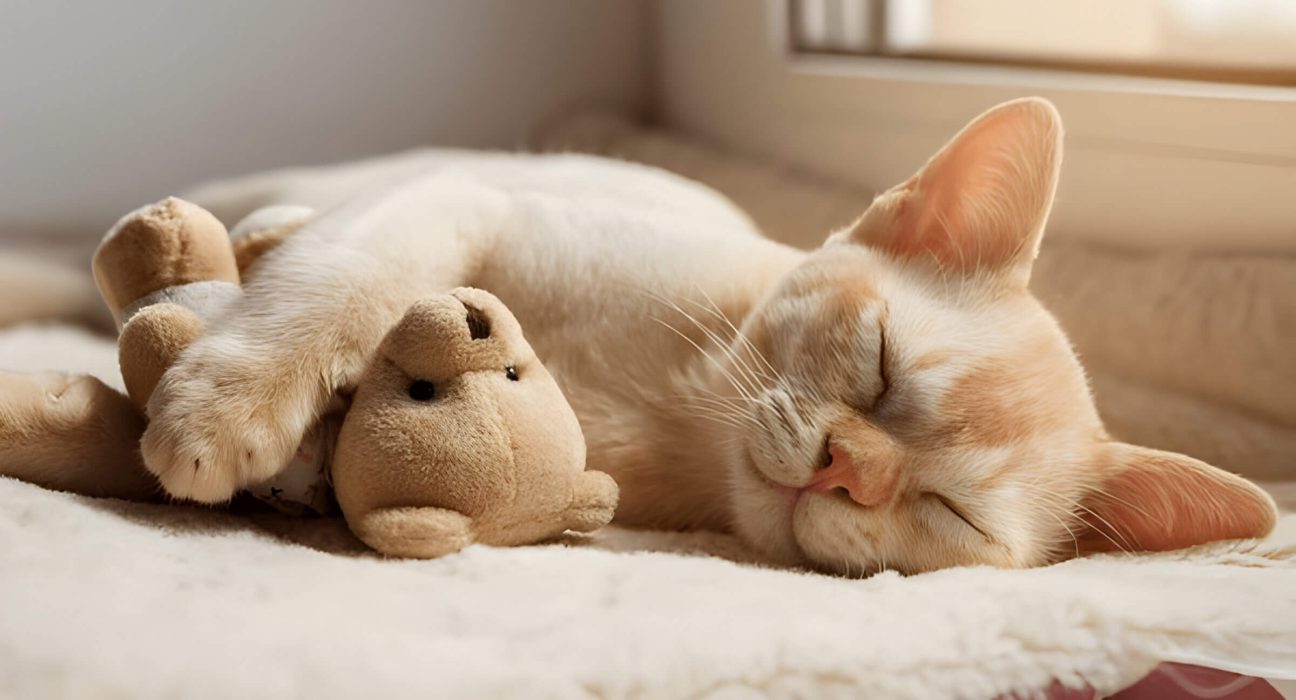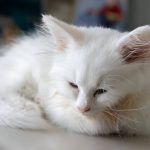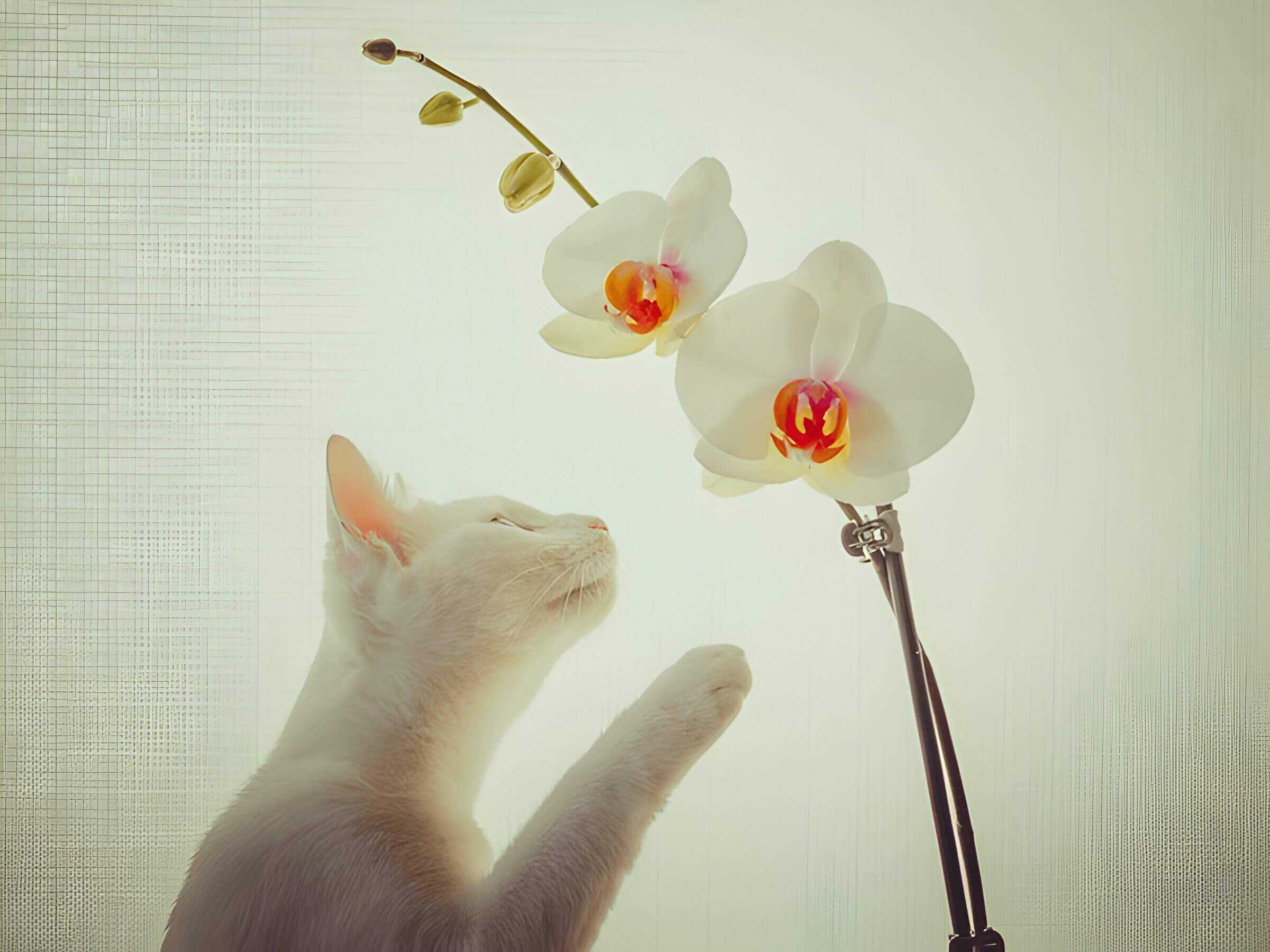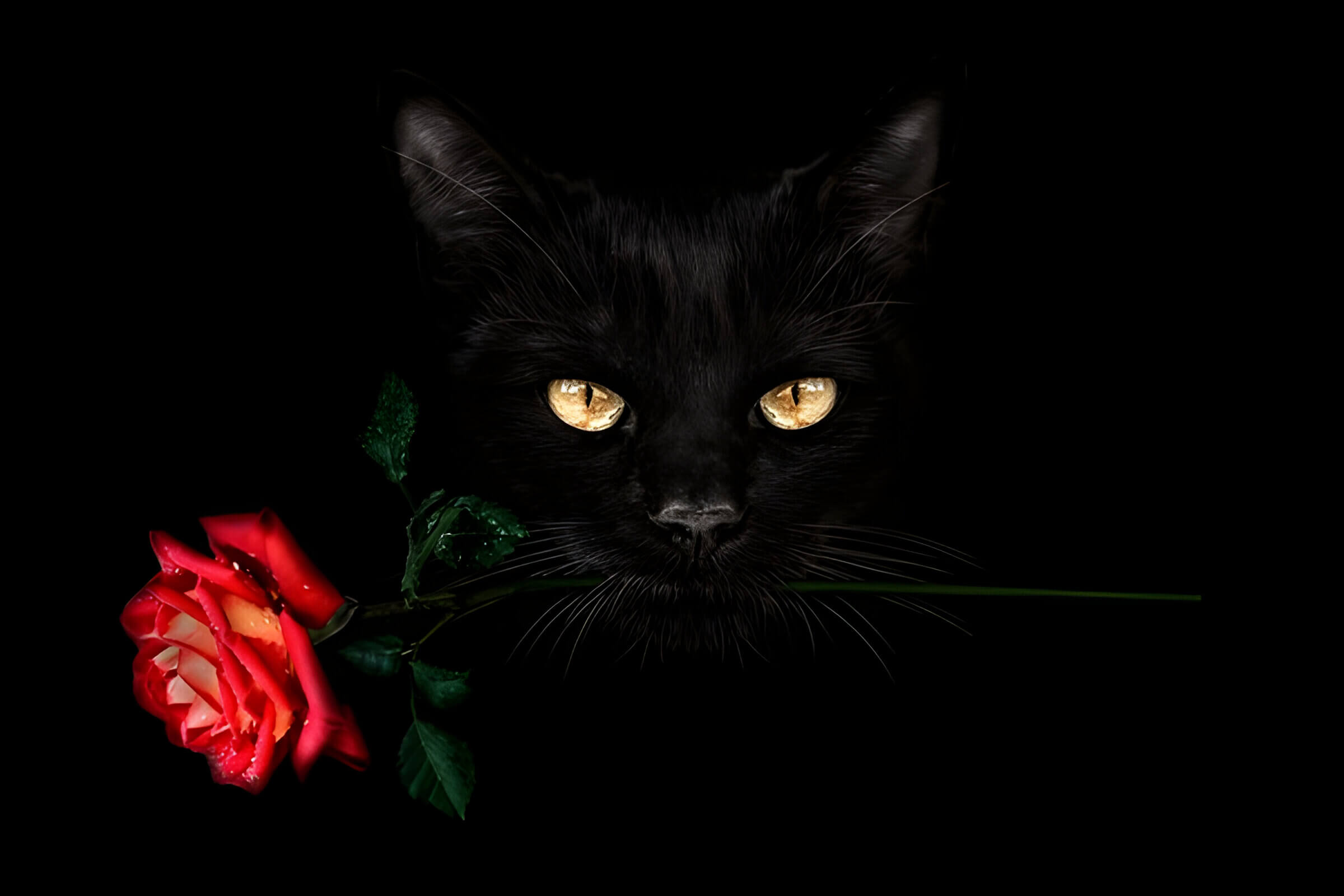Have you ever watched your feline friend twitch and make soft noises while sleeping, wondering what’s going on in their mind? The fascinating world of cat sleep has long intrigued both pet owners and scientists. This exploration delves into the mysterious realm of feline slumber, examining sleep patterns, dreaming behaviors, and the crucial role sleep plays in cats’ lives. By understanding these aspects, we can gain valuable insights into our furry companions’ well-being and how to best support their sleep needs.
The Science Behind Cat Sleep (Understanding Feline Sleep Cycles)
Cats are renowned for their sleeping habits, often spending up to 16 hours a day in slumber. Understanding the science behind cat sleep can provide valuable insights into feline behavior and health. Like humans, cats experience different sleep stages, including both non-REM and REM (Rapid Eye Movement) sleep.
During non-REM sleep, cats enter a state of light sleep, followed by deep sleep. In this phase, their bodies repair and regenerate tissues, build bone and muscle, and strengthen the immune system. REM sleep in cats is characterized by increased brain activity, twitching whiskers, and rapid eye movements beneath closed eyelids. This stage is crucial for processing information, consolidating memories, and dreaming.
Feline sleep patterns are polyphasic, meaning cats have multiple sleep-wake cycles throughout the day and night. This evolutionary trait allowed their wild ancestors to remain alert for potential prey or predators. The duration of cat sleep can vary based on factors such as age, health, and environment, with kittens and senior cats typically requiring more sleep than adult cats.
Interestingly, cat brain activity during sleep shares similarities with human brain activity. Studies have shown that cats exhibit similar brainwave patterns during different sleep stages, suggesting that they may experience dreams much like humans do. Understanding these sleep cycles can help cat owners provide better care and recognize potential sleep-related health issues in their feline companions.
Signs That Your Cat Might Be Dreaming
Cats spend a significant portion of their lives sleeping, and just like humans, they experience different sleep stages, including REM (Rapid Eye Movement) sleep, where dreams occur. Here are some telltale signs that your feline friend might be in dreamland:
- Twitching: If you notice your cat’s whiskers, ears, or tail twitching during sleep, it could indicate they’re dreaming. These subtle movements often correspond to the actions they might be experiencing in their dream world.
- Paw movements: Observe your cat’s paws while they sleep. Gentle twitching or “running” motions might suggest they’re chasing something in their dreams, perhaps reliving a recent playtime or hunting experience.
- Vocalizations: Soft meows, chirps, or even quiet growls during sleep can be signs of dreaming. These sounds may reflect what your cat is experiencing in their dream state.
- Eye movement: Although your cat’s eyes are closed, you might notice rapid eye movements beneath their eyelids. This is a clear indication of REM sleep, the stage where most vivid dreams occur.
- Body jerks: Occasional full-body jerks or sudden movements during sleep are normal and often associated with dreaming. These involuntary actions are similar to the way humans sometimes jolt awake from a dream.
Understanding these sleep behaviors can provide fascinating insights into your cat’s inner world and help you appreciate the complexity of their sleep patterns.
What Do Cats Dream About? Theories and Speculations
While we can’t directly ask our feline friends about their dreams, researchers and cat behaviorists have developed several theories about what cats might experience during their slumber. Cat dream content is likely influenced by their daily activities and instincts. Feline dream experiences may include scenarios related to hunting, play, and exploration, mirroring their natural behaviors.
Cat memory and dreams are thought to be interconnected, with cats potentially reliving or processing recent events during sleep. This could involve replaying interactions with their owners, other pets, or memorable experiences from their day. Cat hunting dreams are believed to be particularly common, as hunting is a deeply ingrained instinct even in domesticated cats. You might notice your cat twitching or making small movements during sleep, possibly acting out these imagined hunting scenarios.
Environmental influences on cat dreams can play a significant role. Cats living in stimulating environments with access to outdoor spaces may have more varied dream content compared to indoor-only cats. Additionally, a cat’s age, health, and overall well-being can impact their dream experiences. While we may never fully understand the intricacies of feline dreams, observing our cats’ sleep behaviors can provide fascinating insights into their subconscious world.
The Importance of Sleep for Cats (Health and Well-being)
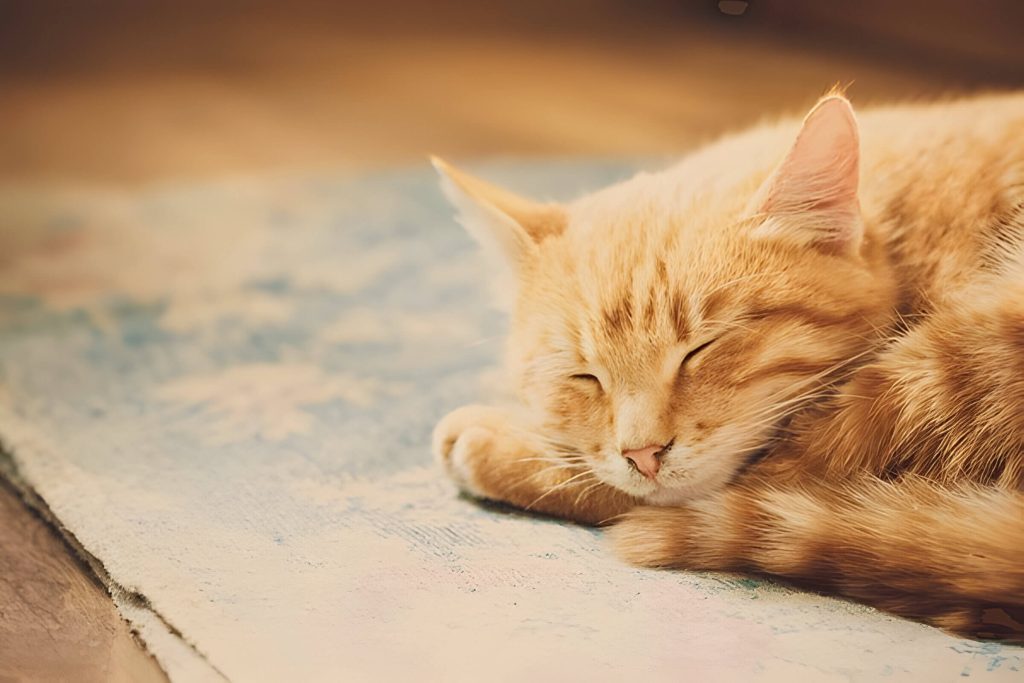
Cats are known for their love of sleep, and for good reason. Adequate sleep is crucial for a cat’s overall health and well-being. On average, cats sleep between 12 to 16 hours a day, with some even reaching up to 20 hours. This extensive sleep pattern serves several important functions in feline physiology.
Sleep plays a vital role in a cat’s immune system function. During sleep, the body produces cytokines, proteins that help fight infection, inflammation, and stress. Cat sleep deprivation can lead to a weakened immune system, making them more susceptible to illnesses.
Cats’ napping habits are not just a sign of laziness; they’re an evolutionary trait. In the wild, cats need to conserve energy for hunting, and frequent naps help them stay alert and ready for action. These short bursts of sleep, typically lasting 15-30 minutes, allow cats to rest while remaining somewhat aware of their surroundings.
However, like humans, cats can also suffer from sleep disorders. Feline cognitive dysfunction, anxiety, or physical discomfort can disrupt a cat’s sleep patterns. If you notice significant changes in your cat’s sleep habits, it’s essential to consult with a veterinarian to rule out any underlying health issues.
Understanding and supporting your cat’s sleep needs is crucial for maintaining their health and happiness. Providing a comfortable, quiet sleeping area and maintaining a consistent routine can help ensure your feline friend gets the rest they need for optimal well-being.
Comparing Cat Dreams to Human Dreams (Similarities and Differences)
While humans have long been fascinated by their own dreams, recent research has shed light on the intriguing world of feline slumber. Comparing cat dreams to human dreams reveals both similarities and differences, offering insights into mammalian dream patterns and animal cognition during sleep.
Like humans, cats experience rapid eye movement (REM) sleep, the stage associated with vivid dreaming. During this phase, both species exhibit similar brain activity patterns, suggesting a shared fundamental dream mechanism. However, the content and complexity of these dreams likely differ significantly.
Cross-species dream research indicates that cats may dream about their daily activities, such as hunting or playing. This mirrors human dreams, which often incorporate elements from our waking lives. Yet, the abstract thinking and complex narratives present in human dreams are probably absent in feline dream experiences.
The function of dreams in cats, while not fully understood, may serve similar purposes as in humans. These could include memory consolidation, emotional processing, and problem-solving. However, the simpler cognitive structure of cats likely results in less elaborate dream scenarios.
One notable difference is the frequency and duration of dream cycles. Cats spend a larger proportion of their sleep time in REM compared to humans, potentially experiencing more frequent, shorter dreams throughout their extended sleep periods.
As animal cognition research advances, our understanding of cat dreams continues to evolve, offering fascinating insights into the sleep patterns and mental processes of our feline companions.
How to Ensure Your Cat Gets Quality Sleep
Creating an ideal sleep environment is crucial for your feline friend’s well-being. Start by providing comfortable cat beds in quiet, draft-free areas of your home. Cats prefer cozy spaces that make them feel secure, so consider enclosed beds or those with raised sides. To reduce sleep disturbances, minimize noise and sudden movements around your cat’s sleeping area, especially during their peak rest times.
Establishing a consistent cat sleep schedule can greatly improve the quality of their rest. Cats are naturally crepuscular, meaning they’re most active during dawn and dusk. Align your play and feeding times with this natural rhythm to promote better sleep patterns. Engage in interactive play sessions before their evening meal to help tire them out and prepare for a good night’s sleep.
Promoting healthy cat sleep habits also involves addressing any underlying health issues that may affect their rest. Regular veterinary check-ups can help identify and treat conditions that might disrupt sleep, such as arthritis or hyperthyroidism. Additionally, ensure your cat has access to fresh water and a clean litter box near their sleeping area to minimize nighttime disturbances.
By implementing these strategies and being mindful of your cat’s sleep needs, you can help ensure they get the quality rest necessary for their overall health and happiness.
The Fascinating World of Cat Dreams and Sleep
As we conclude our exploration into the mysterious realm of feline slumber, it’s clear that cat dreams and sleep patterns are both intriguing and complex. While we may never fully understand what goes on in our feline friends’ minds as they doze, scientific research has provided valuable insights into their sleep cycles and potential dream experiences.
From their unique sleep positions to the twitching whiskers and paw movements during REM sleep, cats continue to captivate us even in their most restful moments. Understanding these sleep behaviors can help us better care for our feline companions and deepen the bond we share with them.
As cat owners, we can take comfort in knowing that our furry friends likely experience dreams similar to our own, processing daily experiences and emotions. By providing a safe, comfortable environment for sleep, we contribute to their overall well-being and happiness.
The world of cat dreams remains a fascinating frontier in animal behavior research. As science continues to advance, we may uncover even more secrets about what goes on behind those gently closed eyelids. Until then, we can appreciate the beauty and mystery of our sleeping cats, knowing that their dreams are just another aspect of their enchanting nature.



